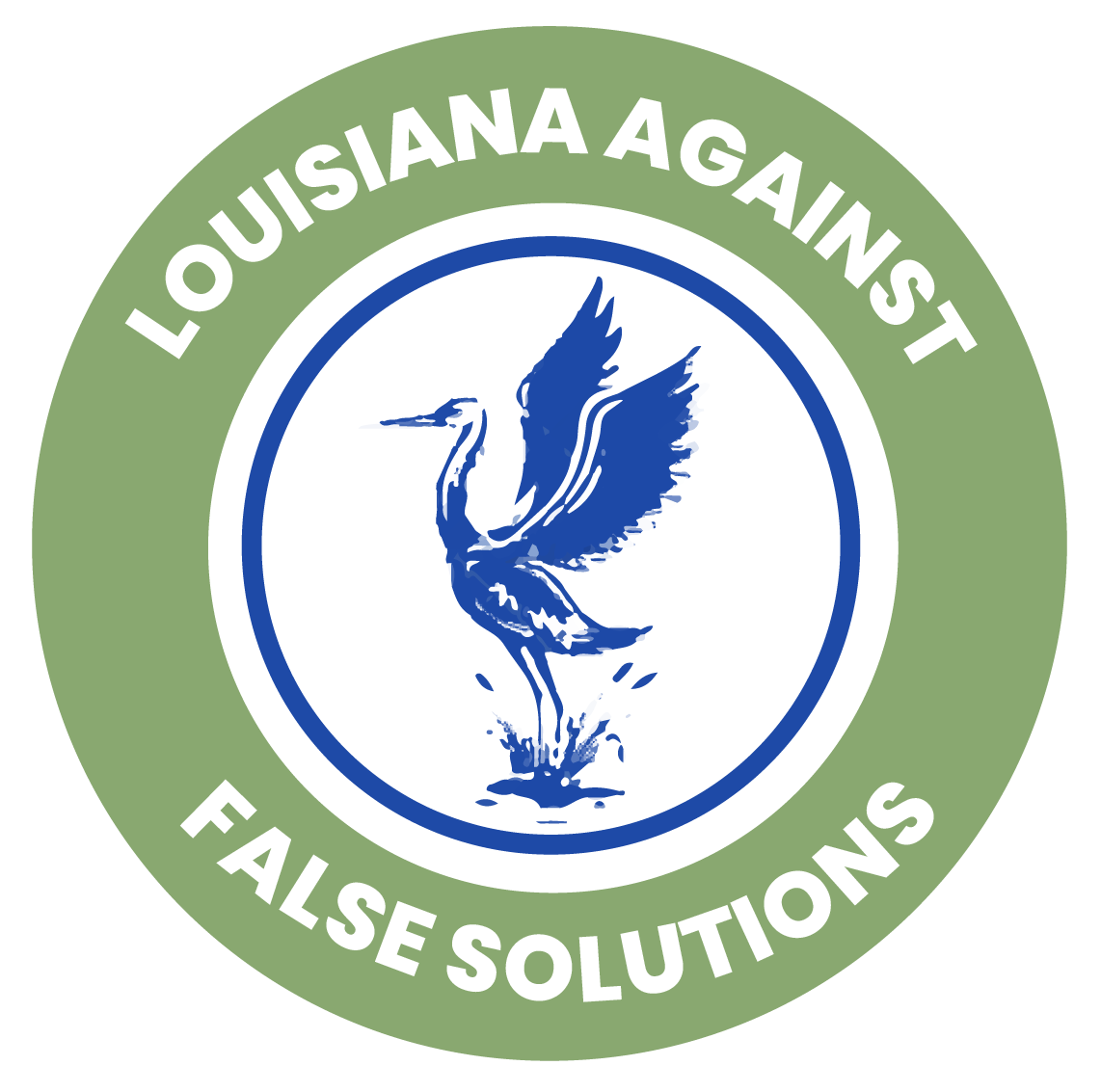Petitions
A new chemical plant, called the Louisiana Clean Energy Complex, in St John, Tangipahoa, and Livingston Parish has announced plans to build in the Burnside area near Sorrento Primary School. The company has also filed a permit for a test well in Lake Maurepas, which many of us know needs to be preserved at all costs. In the future, the company plans to build over 15 injection wells to dump liquid carbon dioxide from the plant under Lake Maurepas, threatening our aquifers and the lake ecosystem.
Louisiana Department of Environmental Quality and Louisiana Department of Natural Resources need to be contacted about our concerns building Carbon Capture and Storage plant right next to a primary school.
Please sign this letter if you would like more information
on the project and an opportunity to attend a public hearing.
Stop Louisiana from Poisoning Primary Schools!
Save Lake Maurepas from Industrial Intrusion
Lake Maurepas is a beautiful, very shallow, brackish, tidal estuarine system, located approximately half way between Baton Rouge and New Orleans. It is surrounded by over 162,000 acres of Wildlife Mangement Areas (WMAs).
A large Carbon Capture Sequestration (CCS) project has been proposed to go under Lake Maurepas. CCS has been promoted as an environmental solution to climate change. However, many scientists question the validity of this practice. This project involves drilling multiple well heads, running pipelines through wetlands and underneath the lake bottom. Seismic testing for this project, which involves exploding over 17,000 dynamite charges 60 feet under the surface of the lake, has already begun. While this seismic activity is taking place, access to areas of the lake will be restricted. The initial seismic demonstration included armed security to intimidate local citizens.
Public Comments
Send a comment to the Louisiana Department of Natural Resources.
To stand against the Air Products project, you can send a comment to the Louisiana Department of Natural Resources (LDNR).
To send a comment to LDNR, click “Add Comments” on this web page: https://tinyurl.com/apcomment
Suggested topics for comments: complaints about how carbon dioxide pipelines are unsafe, concerns about the harm carbon capture will do to the Maurepas Swamp, concerns about the future of Lake Maurepas, and demanding a public hearing and a full Environmental Impact Statement (EIS).
Send a comment to the Louisiana Department of Environmental Quality (LDEQ).
Part of the Air Products project includes an ammonia plant in Ascension Parish.
Email LDEQ to request a public hearing and a transparent process for the Air Products project.
To submit your comment, email deq.publicnotices@la.gov and make the subject line of your email “AI 23321 Air Products Blue Energy Air Permit.”
Some ideas for your comments are: the air pollution this ammonia plant will create, the fact that the plant will be near a school, that 3,000 people will live near this plant and breathe the toxic chemicals. Please also ask for a public hearing!
Write a Letter to the Editor
HOW DO YOU WRITE A LETTER TO THE EDITOR?
OPEN THE LETTER WITH A SIMPLE SALUTATION.
Don't worry if you don't know the editor's name.
A simple "To the Editor of the Advocate," or just
“To the Editor:” is sufficient. If you have the editor's name, however, you should use it to increase the possibilities of your letter being read.
1
GRAB THE READER'S ATTENTION.
Your opening sentence is very important.
It should tell readers what you’re writing about, and make them want to read more.
2
EXPLAIN WHAT THE LETTER IS ABOUT AT THE START.
Throughout your letter, remember the rule:
Be quick, Be concise, and then Be quiet.
Don't make the editor or the general public wait to find out what you want to say. Tell them your key point at the beginning.
3
EXPLAIN WHY THE ISSUE IS IMPORTANT.
If you are motivated enough to write a letter to a newspaper or magazine, the importance of your topic may seem clear to you. Remember, though, that the general public probably doesn't share your background or the interest. Explain the issue and its importance simply. Use plain language that most people will understand
4
KEEP IT BRIEF.
Generally, shorter letters have a better chance of being published. So go back over your letter and see if anything can be cut or condensed. If you have a lot to say and it can't be easily made short, you may want to check with the editor to see if you could write a longer opinion feature or guest column.
7
8
STATE YOUR OPINION ABOUT WHAT SHOULD BE DONE.
You can write a letter just to ''vent," or to support or criticize a certain action or policy, but you may also have suggestions about what could be done to improve the situation. If so, be sure to add these as well. Be specific. And the more good reasons you can give to back up your suggestions, the better.
6
GIVE EVIDENCE FOR ANY
PRAISE OR CRITICISM.
If you are writing a letter discussing a past or pending action, be clear in showing why this will have good or bad results.
5
SIGN THE LETTER.
Be sure to write your full name (and title, if relevant) and to include your address, phone number, and e-mail address. Newspapers won't print anonymous letters, though in some cases they may withhold your name on request. They may also call you to confirm that you wrote the letter before they publish it.
9
CHECK YOUR LETTER TO MAKE SURE
IT'S CLEAR AND TO THE POINT.
A newspaper may not print every letter it receives, but clear, well-written letters are likely to be given more serious consideration.




